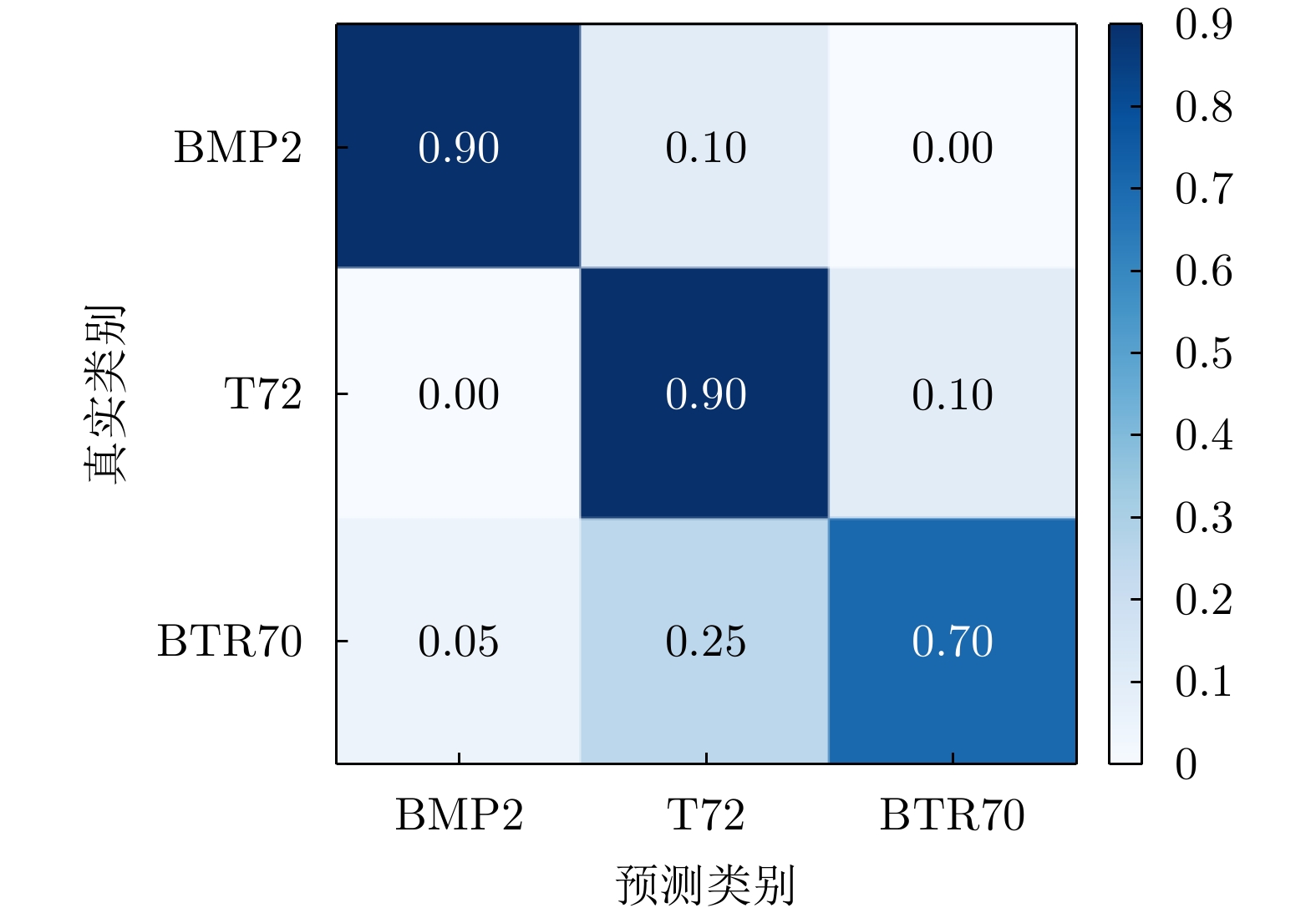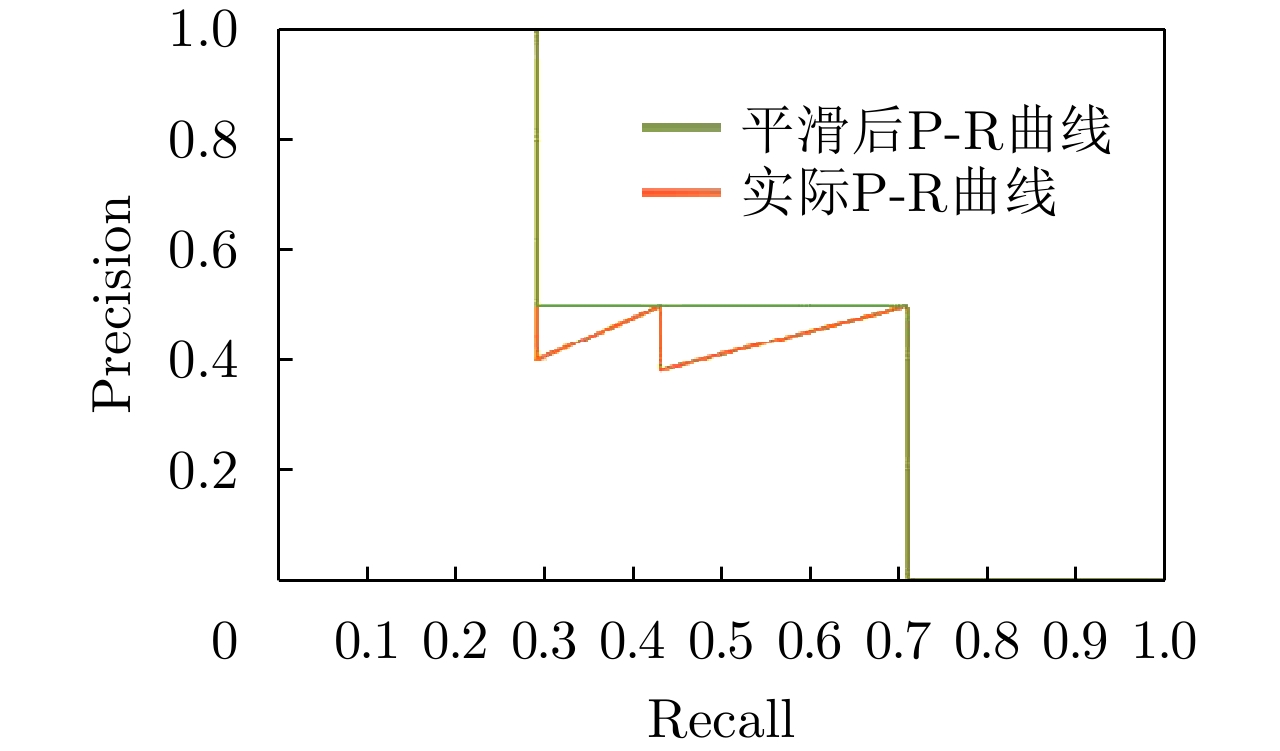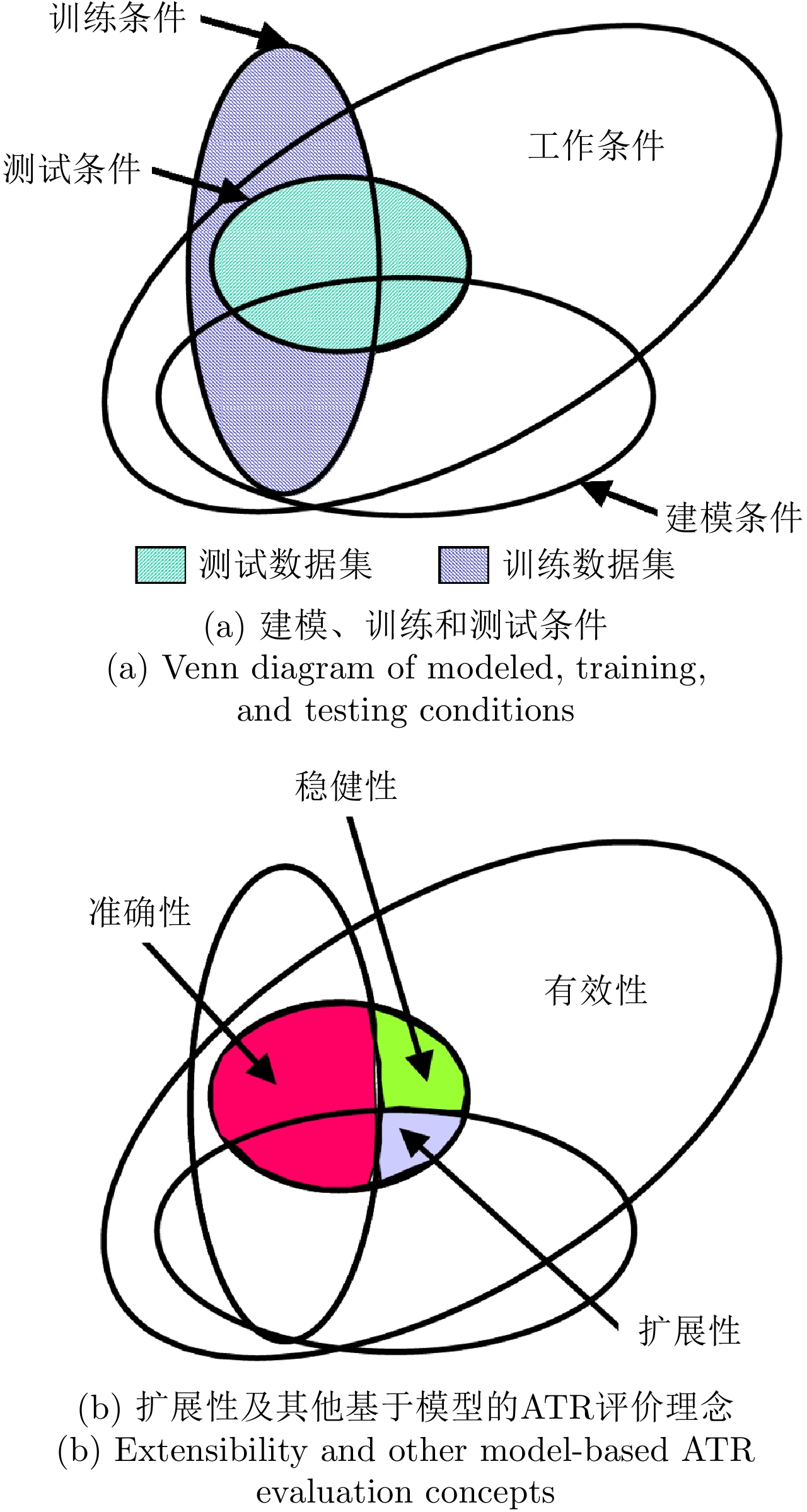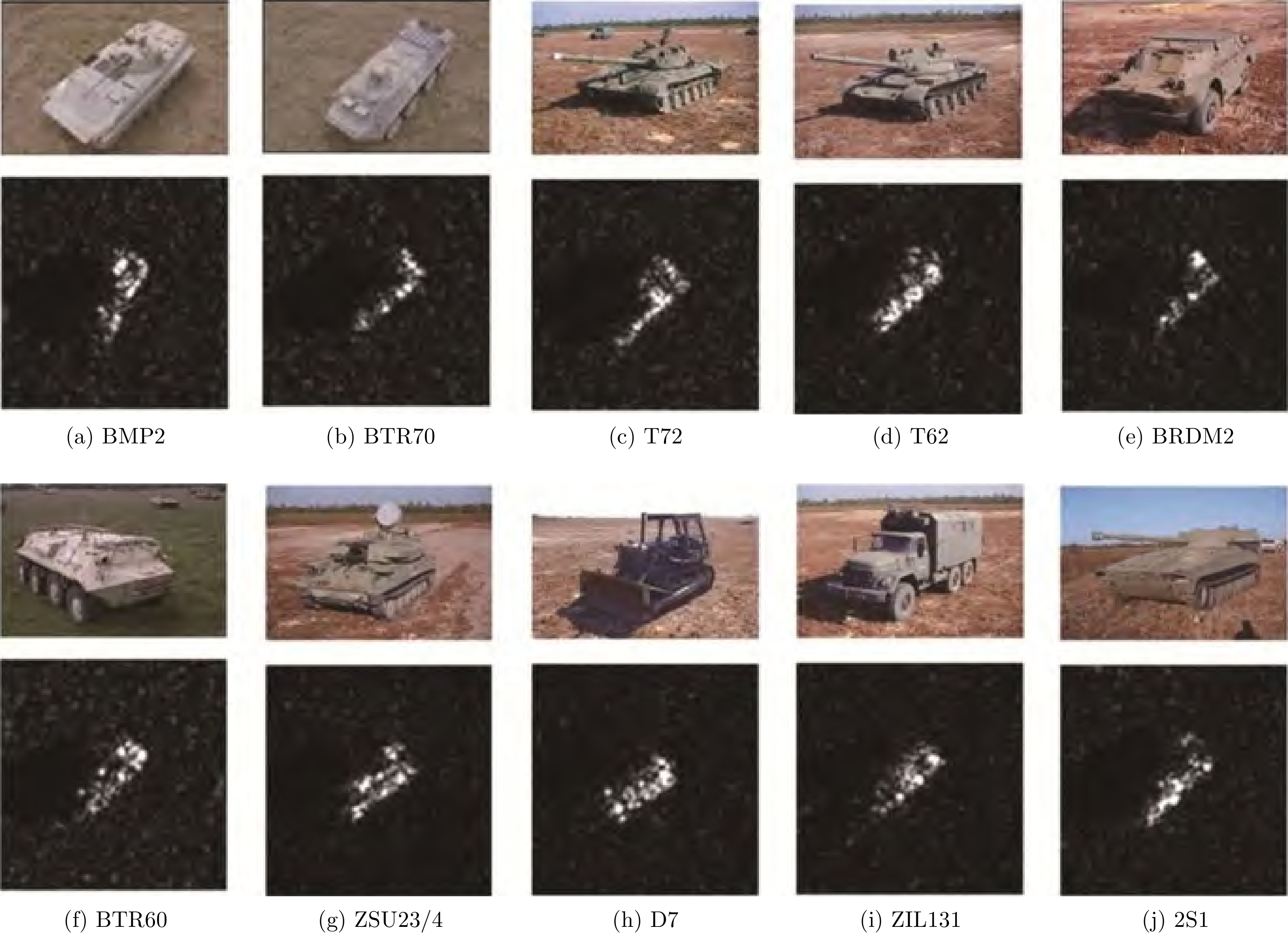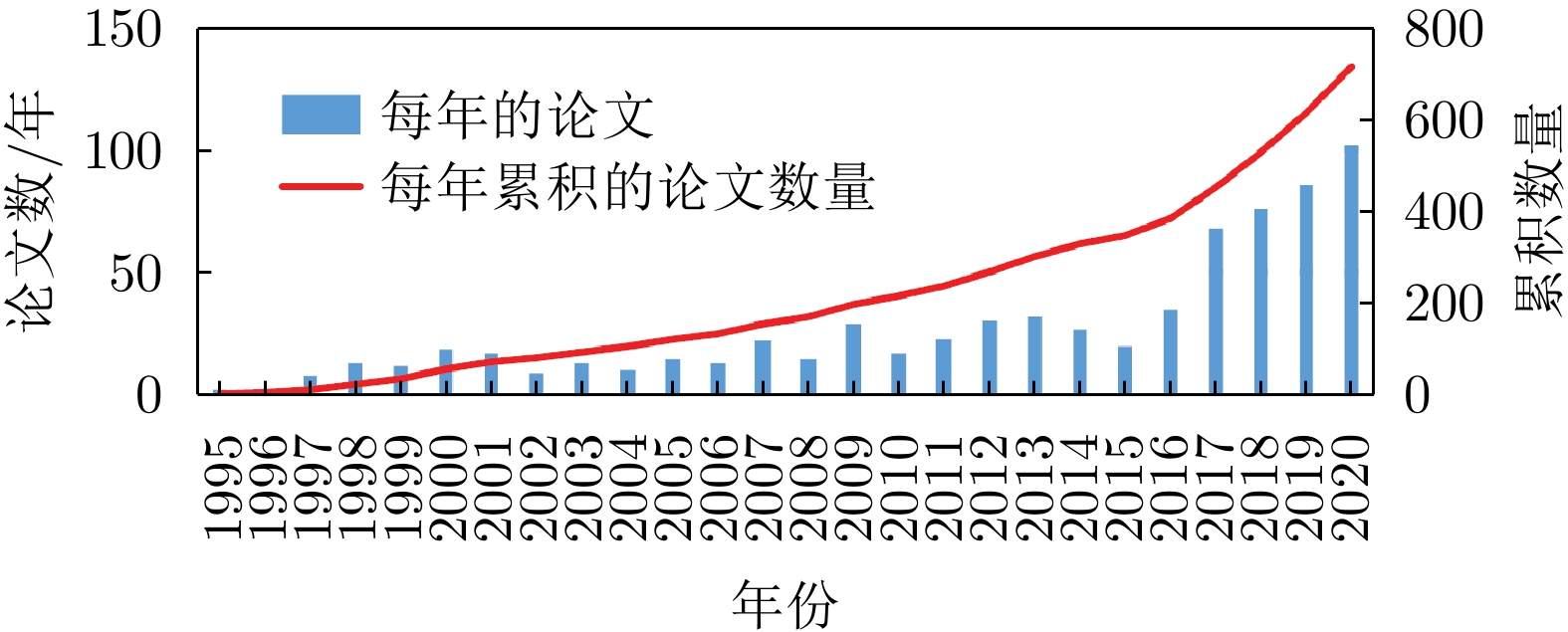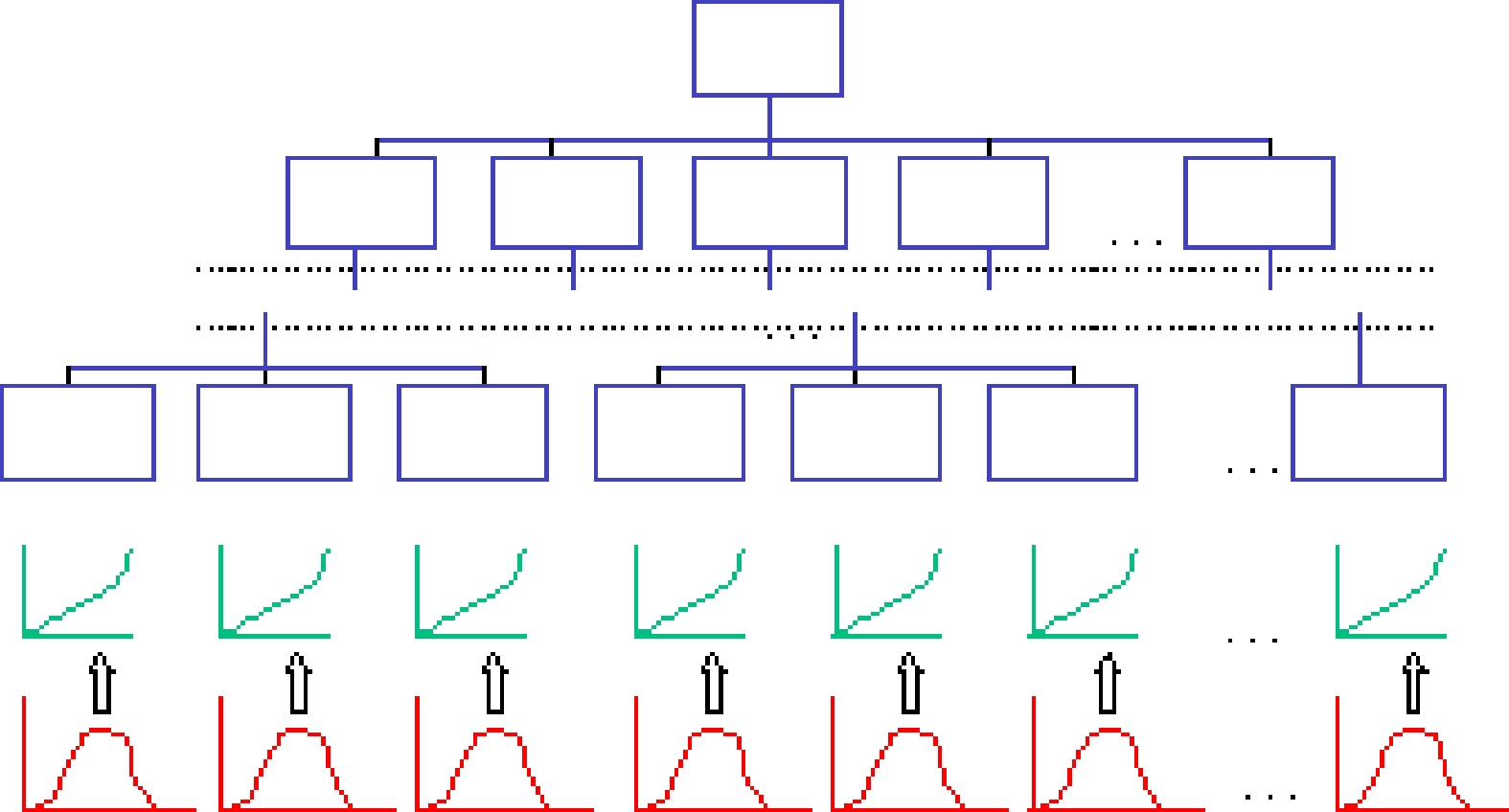| [1] |
BHANU B, DUDGEON D E, ZELNIO E G, et al. Guest editorial introduction to the special issue on automatic target detection and recognition[J]. IEEE Transactions on Image Processing, 1997, 6(1): 1–6. doi: 10.1109/TIP.1997.552076 |
| [2] |
|
| [3] |
YU Wenxian. Automatic target recognition from an engineering perspective[J]. Journal of Radars, 2022, 11(5): 737–752. doi: 10.12000/JR22178 |
| [4] |
张天序. 成像自动目标识别[M]. 武汉: 湖北科学技术出版社, 2005.
ZHANG Tianxu. Automated Recognition of Imaged Targets[M]. Wuhan: Hubei Science and Technology Press, 2005.
|
| [5] |
ROSS T D and MOSSING J C. The MSTAR evaluation methodology[C]. SPIE 3721, Algorithms for Synthetic Aperture Radar Imagery VI, Orlando, USA, 1999: 705–713.
|
| [6] |
ROSS T D. Confidence intervals for ATR performance metrics[C]. SPIE 4382, Algorithms for Synthetic Aperture Radar Imagery VIII, Orlando, USA, 2001: 318–329.
|
| [7] |
MOSSING J C and ROSS T D. Evaluation of SAR ATR algorithm performance sensitivity to MSTAR extended operating conditions[C]. SPIE 3370, Algorithms for Synthetic Aperture Radar Imagery V, Orlando, USA, 1998: 554–565.
|
| [8] |
ROSS T D and MINARDI M E. Discrimination and confidence error in detector-reported scores[C]. SPIE 5427, Algorithms for Synthetic Aperture Radar Imagery XI, Orlando, USA, 2004: 342–353.
|
| [9] |
ROSS T D, WESTERKAMP L A, ZELNIO E G, et al. Extensibility and other model-based ATR evaluation concepts[C]. SPIE 3070, Algorithms for Synthetic Aperture Radar Imagery IV, Orlando, USA, 1997: 554–565.
|
| [10] |
ROSS T D, BRADLEY J J, HUDSON L J, et al. SAR ATR: So what’s the problem? An MSTAR perspective[C]. SPIE 3721, Algorithms for Synthetic Aperture Radar Imagery VI, Orlando, USA, 1999: 662–672.
|
| [11] |
ROSS T D, WORRELL S W, VELTEN V J, et al. Standard SAR ATR evaluation experiments using the MSTAR public release data set[C]. SPIE 3370, Algorithms for Synthetic Aperture Radar Imagery V, Orlando, USA, 1998: 566–573.
|
| [12] |
李彦鹏. 自动目标识别效果评估——基础、理论体系及相关研究[D]. [博士论文], 国防科学技术大学, 2004.
LI Yanpeng. Performance evaluation in automatic target recognition—foundation, theoretic system and related research[D]. [Ph. D. dissertation], National University of Defense Technology, 2004.
|
| [13] |
LI Yanpeng, LI Xiang, WANG Hongqiang, et al. A compact methodology to understand, evaluate, and predict the performance of automatic target recognition[J]. Sensors, 2014, 14(7): 11308–11350. doi: 10.3390/s140711308 |
| [14] |
LI Yanpeng, SHU Shaoxian, and HE Meisheng. Fuzzy run theory and its application in performance evaluation of automatic target recognition[C]. The 9th International Symposium on Next Generation Electronics, Changsha, China, 2021.
|
| [15] |
KECHAGIAS-STAMATIS O and AOUF N. Evaluating 3D local descriptors for future LIDAR missiles with automatic target recognition capabilities[J]. The Imaging Science Journal, 2017, 65(7): 428–437. doi: 10.1080/13682199.2017.1361665 |
| [16] |
SHARMA S, GUPTA S, GUPTA D, et al. Performance evaluation of the deep learning based convolutional neural network approach for the recognition of chest X-ray images[J]. Frontiers in Oncology, 2022, 12: 932496. doi: 10.3389/fonc.2022.932496 |
| [17] |
GUO Ming, LI Biao, SHAO Zhaoqun, et al. Objective image fusion evaluation method for target recognition based on target quality factor[J]. Multimedia Systems, 2022, 28(2): 495–510. doi: 10.1007/s00530-021-00850-1 |
| [18] |
QI Zhen, CHENG Guangtao, ZHANG Youkui, et al. Researching on evaluation method of acoustic target recognition models based on information entropy[J]. Ship Science and Technology, 2021, 43(6): 134–137. doi: 10.3404/j.issn.1672-7649.2021.06.025 |
| [19] |
HE Wentao and HUANG Xueyu. Research on evaluation of target recognition method in engineering application[J]. Industrial Control Computer, 2020, 33(11): 78–79, 83. doi: 10.3969/j.issn.1001-182X.2020.11.031 |
| [20] |
ZHOU Ying, ZHANG Xinggan, and WANG Qiong. Performance optimization and evaluation system for radar target recognition algorithm[J]. Journal of Nanjing University: Natural Science, 2017, 53(6): 1187–1193. doi: 10.13232/j.cnki.jnju.2017.06.021 |
| [21] |
HE Jun, XIAO Li, LIU Zheng, et al. A factor effect measuring method and its application in ATR system evaluation[J]. Operations Research and Management Science, 2010, 19(2): 56–62. doi: 10.3969/j.issn.1007-3221.2010.02.010 |
| [22] |
LIU Hongya and JIA Xin. Assessment of ISAR jamming effectiveness based on target tracking and recognizing[J]. Operations Research and Management Science, 2010, 19(6): 165–170. doi: 10.3969/j.issn.1007-3221.2010.06.026 |
| [23] |
庄钊文, 黎湘, 李彦鹏, 等. 自动目标识别效果评估技术[M]. 北京: 国防工业出版社, 2006.
ZHUANG Zhaowen, LI Xiang, LI Yanpeng, et al. Performance Evaluation Technology for Automatic Target Recognition[M]. Beijing: National Defense Industry Press, 2006.
|
| [24] |
刘伟. 自动目标识别系统效能评估方法研究[D]. [硕士论文], 国防科学技术大学, 2007.
LIU Wei. Research on performance evaluation methods of automatic target recognition system[D]. [Master dissertation], National University of Defense Technology, 2007.
|
| [25] |
何峻. 自动目标识别评估方法研究[D]. [博士论文], 国防科学技术大学, 2009.
HE Jun. Research on automatic target recognition evaluation method[D]. [Ph. D. dissertation], National University of Defense Technology, 2009.
|
| [26] |
秦富童. 遥感图像目标识别效果评估研究[D]. [硕士论文], 中国科学技术大学, 2010.
QIN Futong. Research on performance evaluation for target recognition on remote image[D]. [Master dissertation], University of Science and Technology of China, 2010.
|
| [27] |
付强, 何峻. 自动目标识别评估方法及应用[M]. 北京: 科学出版社, 2013.
FU Qiang and HE Jun. Automatic Target Recognition Evaluation Method and Its Application[M]. Beijing: Science Press, 2013.
|
| [28] |
LÜ Jinjian, DING Jianjiang, RUAN Chongji, et al. Study on ATR algorithm evaluation: A survey[J]. Electronics Optics& Control, 2011, 18(9): 48–52, 77. doi: 10.3969/j.issn.1671-637X.2011.09.011 |
| [29] |
NEBABIN V G. Methods and Techniques of Radar Recognition[M]. Boston: Artech House, 1994.
|
| [30] |
DIEMUNSCH J R and WISSINGER J. Moving and stationary target acquisition and recognition (MSTAR) model-based automatic target recognition: Search technology for a robust ATR[C]. SPIE 3370, Algorithms for Synthetic Aperture Radar Imagery V, Orlando, USA, 1998: 481–492.
|
| [31] |
WISSINGER J, WASHBURN R B, FRIEDLAND N S, et al. Search algorithms for model-based SAR ATR[C]. SPIE 2757, Algorithms for Synthetic Aperture Radar Imagery III, Orlando, USA, 1996: 279–93.
|
| [32] |
GILMORE J F. Knowledge-based target recognition system evolution[J]. Optical Engineering, 1991, 30(5): 557–570. doi: 10.1117/12.55829 |
| [33] |
DENG Zhihong, TANG Shiwei, ZHANG Ming, et al. Overview of Ontology[J]. Acta Scientiarum Naturalium Universitatis Pekinensis, 2002, 38(5): 730–738. doi: 10.3321/j.issn:0479-8023.2002.05.022 |
| [34] |
KEIM D A. Information visualization and visual data mining[J]. IEEE Transactions on Visualization and Computer Graphics, 2002, 8(1): 1–8. doi: 10.1109/2945.981847 |
| [35] |
STEINBERG A N. Context-sensitive data fusion using structural equation modeling[C]. The 12th International Conference on Information Fusion, Seattle, USA, 2009: 725–731.
|
| [36] |
ERNISSE B E, ROGERS S K, DESIMIO M P, et al. Complete automatic target cuer/recognition system for tactical forward-looking infrared images[J]. Optical Engineering, 1997, 36(9): 2593–2603. doi: 10.1117/1.601484 |
| [37] |
INGGS M R and ROBINSON A D. Ship target recognition using low resolution radar and neural networks[J]. IEEE Transactions on Aerospace and Electronic Systems, 1999, 35(2): 386–393. doi: 10.1109/7.766923 |
| [38] |
NING Wu, CHEN Wugun, and ZHANG Xinggan. Automatic target recognition of ISAR object images based on neural network[C]. International Conference on Neural Networks and Signal Processing, Nanjing, China, 2003: 373–376.
|
| [39] |
AVCI E and COTELI R. A new automatic target recognition system based on wavelet extreme learning machine[J]. Expert Systems with Applications, 2012, 39(16): 12340–12348. doi: 10.1016/j.eswa.2012.04.012 |
| [40] |
DONG Shi, WANG Ping, and ABBAS K. A survey on deep learning and its applications[J]. Computer Science Review, 2021, 40: 100379. doi: 10.1016/j.cosrev.2021.100379 |
| [41] |
DARGAN S, KUMAR M, AYYAGARI M R, et al. A survey of deep learning and its applications: A new paradigm to machine learning[J]. Archives of Computational Methods in Engineering, 2020, 27(4): 1071–1092. doi: 10.1007/s11831-019-09344-w |
| [42] |
ZHAI Yikui, DENG Wenbo, XU Ying, et al. Robust SAR automatic target recognition based on transferred MS-CNN with L 2-regularization[J]. Computational Intelligence and Neuroscience, 2019, 2019: 9140167. doi: 10.1155/2019/9140167 |
| [43] |
KRIZHEVSKY A, SUTSKEVER I, and HINTON G E. ImageNet classification with deep convolutional neural networks[J]. Communications of the ACM, 2017, 60(6): 84–90. doi: 10.1145/3065386 |
| [44] |
ZHU Xiaoxiang, MONTAZERI S, ALI M, et al. Deep learning meets SAR: Concepts, models, pitfalls, and perspectives[J]. IEEE Geoscience and Remote Sensing Magazine, 2021, 9(4): 143–172. doi: 10.1109/MGRS.2020.3046356 |
| [45] |
NEUPANE D and SEOK J. A review on deep learning-based approaches for automatic sonar target recognition[J]. Electronics, 2020, 9(11): 1972. doi: 10.3390/electronics9111972 |
| [46] |
田壮壮, 占荣辉, 胡杰民, 等. 基于卷积神经网络的SAR图像目标识别研究[J]. 雷达学报, 2016, 5(3): 320–325. doi: 10.12000/JR16037TIAN Zhuangzhuang, ZHAN Ronghui, HU Jiemin, et al. SAR ATR based on convolutional neural network[J]. Journal of Radars, 2016, 5(3): 320–325. doi: 10.12000/JR16037 |
| [47] |
POUYANFAR S, SADIQ S, YAN Yilin, et al. A survey on deep learning: Algorithms, techniques, and applications[J]. ACM Computing Surveys, 2019, 51(5): 92. doi: 10.1145/3234150 |
| [48] |
WANG Rongchuan, ZHUANG Zhihong, WANG Hongbo, et al. HRRP classification and recognition method of radar target based on convolutional neural network[J]. Modern Radar, 2019, 41(5): 33–38. doi: 10.16592/j.cnki.1004-7859.2019.05.007 |
| [49] |
PAN Mian, LIU Ailin, YU Yanzhen, et al. Radar HRRP target recognition model based on a stacked CNN-Bi-RNN with attention mechanism[J]. IEEE Transactions on Geoscience and Remote Sensing, 2022, 60: 5100814. doi: 10.1109/TGRS.2021.3055061 |
| [50] |
贺丰收, 何友, 刘准钆, 等. 卷积神经网络在雷达自动目标识别中的研究进展[J]. 电子与信息学报, 2020, 42(1): 119–131. doi: 10.11999/JEIT180899HE Fengshou, HE You, LIU Zhunga, et al. Research and development on applications of convolutional neural networks of radar automatic target recognition[J]. Journal of Electronics& Information Technology, 2020, 42(1): 119–131. doi: 10.11999/JEIT180899 |
| [51] |
DING Baiyuan, WEN Gongjian, MA Conghui, et al. An efficient and robust framework for SAR target recognition by hierarchically fusing global and local features[J]. IEEE Transactions on Image Processing, 2018, 27(12): 5983–5995. doi: 10.1109/TIP.2018.2863046 |
| [52] |
ZHANG Jinsong, XING Mengdao, and XIE Yiyuan. FEC: A feature fusion framework for SAR target recognition based on electromagnetic scattering features and deep CNN features[J]. IEEE Transactions on Geoscience and Remote Sensing, 2021, 59(3): 2174–2187. doi: 10.1109/TGRS.2020.3003264 |
| [53] |
LI Yi, DU Lan, and WEI Di. Multiscale CNN based on component analysis for SAR ATR[J]. IEEE Transactions on Geoscience and Remote Sensing, 2022, 60: 5211212. doi: 10.1109/TGRS.2021.3100137 |
| [54] |
FENG Sijia, JI Kefeng, ZHANG Linbin, et al. SAR target classification based on integration of ASC parts model and deep learning algorithm[J]. IEEE Journal of Selected Topics in Applied Earth Observations and Remote Sensing, 2021, 14: 10213–10225. doi: 10.1109/JSTARS.2021.3116979 |
| [55] |
喻玲娟, 王亚东, 谢晓春, 等. 基于FCNN和ICAE的SAR图像目标识别方法[J]. 雷达学报, 2018, 7(5): 622–631. doi: 10.12000/JR18066YU Lingjuan, WANG Yadong, XIE Xiaochun, et al. SAR ATR based on FCNN and ICAE[J]. Journal of Radars, 2018, 7(5): 622–631. doi: 10.12000/JR18066 |
| [56] |
FANG Houzhang, XIA Mingjiang, ZHOU Gang, et al. Infrared small UAV target detection based on residual image prediction via global and local dilated residual networks[J]. IEEE Geoscience and Remote Sensing Letters, 2022, 19: 7002305. doi: 10.1109/LGRS.2021.3085495 |
| [57] |
LI Boyang, XIAO Chao, WANG Longguang, et al. Dense nested attention network for infrared small target detection[J]. IEEE Transactions on Image Processing, 2023, 32: 1745–1758. doi: 10.1109/TIP.2022.3199107 |
| [58] |
DU Jinming, LU Huanzhang, HU Moufa, et al. CNN-based infrared dim small target detection algorithm using target-oriented shallow-deep features and effective small anchor[J]. IET Image Processing, 2021, 15(1): 1–15. doi: 10.1049/ipr2.12001 |
| [59] |
LI Rui, WANG Xiaodan, WANG Jian, et al. SAR target recognition based on efficient fully convolutional attention block CNN[J]. IEEE Geoscience and Remote Sensing Letters, 2022, 19: 4005905. doi: 10.1109/LGRS.2020.3037256 |
| [60] |
GOEL A, AGARWAL A, VATSA M, et al. DNDNet: Reconfiguring CNN for adversarial robustness[C]. 2020 IEEE/CVF Conference on Computer Vision and Pattern Recognition Workshops, Seattle, USA, 2020: 103–110.
|
| [61] |
HUANG Teng, ZHANG Qixiang, LIU Jiabao, et al. Adversarial attacks on deep-learning-based SAR image target recognition[J]. Journal of Network and Computer Applications, 2020, 162: 102632. doi: 10.1016/j.jnca.2020.102632 |
| [62] |
ZHANG Qinghao. Improvement of online game anti-cheat system based on deep Learning[C]. The 2nd International Conference on Information Science and Education, Chongqing, China, 2021: 652–655.
|
| [63] |
HUANG Zhongling, PAN Zongxu, and LEI Bin. Transfer learning with deep convolutional neural network for SAR target classification with limited labeled data[J]. Remote Sensing, 2017, 9(9): 907. doi: 10.3390/rs9090907 |
| [64] |
MALMGREN-HANSEN D, KUSK A, DALL J, et al. Improving SAR automatic target recognition models with transfer learning from simulated data[J]. IEEE Geoscience and Remote Sensing Letters, 2017, 14(9): 1484–1488. doi: 10.1109/LGRS.2017.2717486 |
| [65] |
ZHAO Siyuan, ZHANG Zenghui, ZHANG Tao, et al. Transferable SAR image classification crossing different satellites under open set condition[J]. IEEE Geoscience and Remote Sensing Letters, 2022, 19: 4506005. doi: 10.1109/LGRS.2022.3159179 |
| [66] |
ZHAO Siyuan, ZHANG Zenghui, GUO Weiwei, et al. An automatic ship detection method adapting to different satellites SAR images with feature alignment and compensation loss[J]. IEEE Transactions on Geoscience and Remote Sensing, 2022, 60: 5225217. doi: 10.1109/TGRS.2022.3160727 |
| [67] |
郭炜炜, 张增辉, 郁文贤, 等. SAR图像目标识别的可解释性问题探讨[J]. 雷达学报, 2020, 9(3): 462–476. doi: 10.12000/JR20059GUO Weiwei, ZHANG Zenghui, YU Wenxian, et al. Perspective on explainable SAR target recognition[J]. Journal of Radars, 2020, 9(3): 462–476. doi: 10.12000/JR20059 |
| [68] |
柯有安. 雷达目标识别(上)[J]. 国外电子技术, 1978(4): 22–30.
KE Youan. Radar target recognition[J]. Foreign Electronic Technique, 1978(4): 22–30.
|
| [69] |
郁文贤, 郭桂蓉. ATR的研究现状和发展趋势[J]. 系统工程与电子技术, 1994(6): 25–32.
YU Wenxian and GUO Guirong. The state of the arts of automatic target recognition[J]. Systems Engineering and Electronics, 1994(6): 25–32.
|
| [70] |
郁文贤. 智能化识别方法及其在舰船雷达目标识别系统中的应用[D]. [博士论文], 国防科学技术大学, 1992.
YU Wenxian. Intelligent recognition method and its application in ship radar target recognition system[D]. [Ph. D. dissertation], National University of Defense Technology, 1992.
|
| [71] |
MOHD M A. Performance characterization and sensitivity analysis of ATR algorithms to scene distortions[C]. SPIE 1957, Architecture, Hardware, and Forward-Looking Infrared Issues in Automatic Target Recognition, Orlando, USA, 1993: 203–214.
|
| [72] |
GU Yuehan, TAO Jiahui, FENG Lipeng, et al. Using VGG16 to military target classification on MSTAR dataset[C]. The 2nd China International SAR Symposium, Shanghai, China, 2021: 1–3.
|
| [73] |
BASSHAM C B. Automatic target recognition classification system evaluation methodology[D]. [Ph. D. dissertation], Air Force Institute of Technology, 2002.
|
| [74] |
ALEMAYEHU D and ZOU K H. Applications of ROC analysis in medical research: Recent developments and future directions[J]. Academic Radiology, 2012, 19(12): 1457–1464. doi: 10.1016/j.acra.2012.09.006 |
| [75] |
KAMARUDIN A N, COX T, and KOLAMUNNAGE-DONA R. Time-dependent ROC curve analysis in medical research: Current methods and applications[J]. BMC Medical Research Methodology, 2017, 17(1): 53. doi: 10.1186/s12874-017-0332-6 |
| [76] |
孙长亮. 基于ROC曲线的ATR算法性能评估方法研究[D]. [硕士论文], 国防科学技术大学, 2006.
SUN Changliang. Study of ATR algorithm performance evaluation method based on ROC curve[D]. [Master dissertation], National University of Defense Technology, 2006.
|
| [77] |
LIU Li, OUYANG Wanli, WANG Xiaogang, et al. Deep learning for generic object detection: A survey[J]. International Journal of Computer Vision, 2020, 128(2): 261–318. doi: 10.1007/s11263-019-01247-4 |
| [78] |
RUSSAKOVSKY O, DENG Jia, SU Hao, et al. ImageNet large scale visual recognition challenge[J]. International Journal of Computer Vision, 2015, 115(3): 211–252. doi: 10.1007/s11263-015-0816-y |
| [79] |
HOIEM D, CHODPATHUMWAN Y, and DAI Qieyun. Diagnosing error in object detectors[C]. The 12th European Conference on Computer Vision, Florence, Italy, 2012: 340–353.
|
| [80] |
KEYDEL E R, LEE S W, and MOORE J T. MSTAR extended operating conditions: A tutorial[C]. SPIE 2757, Algorithms for Synthetic Aperture Radar Imagery III, Orlando, USA, 1996: 228–242.
|
| [81] |
BLASCH E, MAJUMDER U, ZELNIO E, et al. Review of recent advances in AI/ML using the MSTAR data[C]. SPIE 11393, Algorithms for Synthetic Aperture Radar Imagery XXVII, 2020.
|
| [82] |
ZHAO Gaoli and SONG Junping. SAR target recognition of MSTAR dataset based on joint use of multiple features[J]. Engineering Journal of Wuhan University, 2022, 55(7): 732–739. doi: 10.14188/j.1671-8844.2022-07-012 |
| [83] |
ROSS T D, BRADLEY J, and O’CONNER M. MSTAR data handbook for experiment planning[R]. AFB, OH: AFRL/SNA with Sverdrup Technology, 1997.
|
| [84] |
KECHAGIAS-STAMATIS O and AOUF N. Automatic target recognition on synthetic aperture radar imagery: A survey[J]. IEEE Aerospace and Electronic Systems Magazine, 2021, 36(3): 56–81. doi: 10.1109/MAES.2021.3049857 |
| [85] |
EVERINGHAM M, VAN GOOL L, WILLIAMS C K I, et al. The pascal visual object classes (VOC) challenge[J]. International Journal of Computer Vision, 2010, 88(2): 303–338. doi: 10.1007/s11263-009-0275-4 |
| [86] |
EVERINGHAM M, ESLAMI S M A, VAN GOOL L, et al. The pascal visual object classes challenge: A retrospective[J]. International Journal of Computer Vision, 2015, 111(1): 98–136. doi: 10.1007/s11263-014-0733-5 |
| [87] |
DENG Jia, DONG Wei, SOCHER R, et al. ImageNet: A large-scale hierarchical image database[C]. IEEE Conference on Computer Vision and Pattern Recognition, Miami, USA, 2009: 248–255.
|
| [88] |
LIN T Y, MAIRE M, BELONGIE S, et al. Microsoft COCO: Common objects in context[C]. European Conference on Computer Vision, Zurich, Switzerland, 2014: 740–755.
|
| [89] |
KUZNETSOVA A, ROM H, ALLDRIN N, et al. The open images dataset V4: Unified image classification, object detection, and visual relationship detection at scale[J]. International Journal of Computer Vision, 2020, 128(7): 1956–1981. doi: 10.1007/s11263-020-01316-z |
| [90] |
GUYON I, MAKHOUL J, SCHWARTZ R, et al. What size test set gives good error rate estimates?[J]. IEEE Transactions on Pattern Analysis and Machine Intelligence, 1998, 20(1): 52–64. doi: 10.1109/34.655649 |
| [91] |
HE Jun and FU Qiang. Posterior probability calculation procedure for recognition rate comparison[J]. Journal of Systems Engineering and Electronics, 2016, 27(3): 700–711. doi: 10.1109/JSEE.2016.00073 |
| [92] |
VO T M. An 8.25b-ENOB 100kSps 290fJ-FoM asynchronous SAR capacitance to digital converter[J]. AEU - International Journal of Electronics and Communications, 2022, 153: 154286. doi: 10.1016/j.aeue.2022.154286 |
| [93] |
KLIMACK W K, BASSHAM C B, and BAUER K W JR. Application of decision analysis to automatic target recognition programmatic decisions[R]. AFIT/EN-TR-02-06, 2002.
|
| [94] |
KLIMACK C B. Hybrid value-utility decision analysis[R]. Operations Research Center of Excellence Technical Report DSE-TR-02-02, 2002.
|
| [95] |
KLIMACK W K. Robustness of multiple objective decision analysis preference functions[D]. [Ph. D. dissertation], Air Force Institute of Technology, 2002.
|
| [96] |
仇国芳. 评估决策的信息集结理论与方法研究[D]. [博士论文], 西安交通大学, 2003.
QIU Guofang. A theoretical and methodological study on information aggregation in assessment processes[D]. [Ph. D. dissertation], Xi’an Jiaotong University, 2003.
|
| [97] |
HE Jun, ZHAO Hongzhong, and FU Qiang. Method for solving hybrid multiple attribute decision making problems based on preference matrix[J]. Systems Engineering and Electronics, 2009, 31(6): 1386–1390. doi: 10.3321/j.issn:1001-506X.2009.06.028 |
| [98] |
HE Jun, FU Ruigang, and WANG Guoyan. Prospect value function construction for pattern recognition algorithm’s accuracy metric[C]. 2022 China Automation Congress, Xiamen, China, 2022: 1409–1413.
|
| [99] |
HUA Yingying, ZHANG Daichi, and GE Shiming. Research progress in the interpretability of deep learning models[J]. Journal of Cyber Security, 2020, 5(3): 1–12. doi: 10.19363/J.cnki.cn10-1380/tn.2020.05.01 |
| [100] |
|
| [101] |
RIBEIRO M T, SINGH S, and GUESTRIN C. “Why should I trust you?”: Explaining the predictions of any classifier[C]. The 22nd ACM SIGKDD International Conference on Knowledge Discovery and Data Mining, San Francisco, USA, 2016: 1135–1144.
|
| [102] |
SELVARAJU R R, COGSWELL M, DAS A, et al. Grad-CAM: Visual explanations from deep networks via gradient-based localization[J]. International Journal of Computer Vision, 2020, 128(2): 336–359. doi: 10.1007/s11263-019-01228-7 |
| [103] |
杜兰, 陈晓阳, 石钰, 等. MMRGait-1.0: 多视角多穿着条件下的雷达时频谱图步态识别数据集[J]. 雷达学报, 2023, 12(4): 892–905. doi: 10.12000/JR22227. DU Lan, CHEN Xiaoyang, SHI Yu, et al. MMRGait-1.0: A radar time-frequency spectrogram dataset for gait recognition under multi-view and multi-wearing conditions[J]. Journal of Radars, 2023, 12(4): 892–905. doi: 10.12000/JR22227. |
| [104] |
|
| [105] |
XIA Runfan, CHEN Jie, HUANG Zhixiang, et al. CRTransSar: A visual transformer based on contextual joint representation learning for SAR ship detection[J]. Remote Sensing, 2022, 14(6): 1488. doi: 10.3390/rs14061488 |
| [106] |
HUI Bingwei, SONG Zhiyong, FAN Hongqi, et al. A dataset for infrared detection and tracking of dim-small aircraft targets under ground/air background[J]. China Scientific Data, 2020, 5(3): 286–297. doi: 10.11922/csdata.2019.0074.zh |
| [107] |
FU Ruigang, FAN Hongqi, ZHU Yongfeng, et al. A dataset for infrared time-sensitive target detection and tracking for air-ground application[J]. China Scientific Data, 2022, 7(2): 206–221. doi: 10.11922/11-6035.csd.2021.0085.zh |
| [108] |
李安然. 面向特定任务的大规模数据集质量高效评估[D]. [博士论文], 中国科学技术大学, 2021.
LI Anran. Efficient task-oriented quality assessment for large-scale datasets[D]. [Ph. D. dissertation], University of Science and Technology of China, 2021.
|
| [109] |
SEIDEL H, STAHL C, BJERKELI F, et al. Assessment of COTS IR image simulation tools for ATR development[C]. SPIE 5807, Automatic Target Recognition XV, 2005, Orlando, USA, 2005: 44–54.
|
| [110] |
AHMADIBENI A, JONES B, BOROOSHAK L, et al. Automatic target recognition of aerial vehicles based on synthetic SAR imagery using hybrid stacked denoising auto-encoders[C]. SPIE 11393, Algorithms for Synthetic Aperture Radar Imagery XXVII, 2020: 71–82.
|
| [111] |
WESTLAKE S T, VOLONAKIS T N, JACKMAN J, et al. Deep learning for automatic target recognition with real and synthetic infrared maritime imagery[C]. SPIE 11543, Artificial Intelligence and Machine Learning in Defense Applications II, 2020, Edingburgh, UN.
|
| [112] |
LI Xuesong, LUO Zijuan, YANG Qirui, et al. Airborne infrared imaging simulation for target recognition[J]. IEEE Journal of Radio Frequency Identification, 2022, 6: 846–850. doi: 10.1109/JRFID.2022.3210387 |
| [113] |
DIVSALAR M, AHMADI M, and NEMATI Y. A SCOR-based model to evaluate LARG supply chain performance using a hybrid MADM method[J]. IEEE Transactions on Engineering Management, 2022, 69(4): 1101–1120. doi: 10.1109/TEM.2020.2974030 |
| [114] |
PENA J, NÁPOLES G, and SALGUEIRO Y. Implicit and hybrid methods for attribute weighting in multi-attribute decision-making: A review study[J]. Artificial Intelligence Review, 2021, 54(5): 3817–3847. doi: 10.1007/s10462-020-09941-3 |
| [115] |
SONG Jiekun, HE Zeguo, JIANG Lina, et al. Research on hybrid multi-attribute three-way group decision making based on improved VIKOR model[J]. Mathematics, 2022, 10(15): 2783. doi: 10.3390/math10152783 |
| [116] |
ZHANG Xingxian and WANG Yingming. A hybrid multi-attribute decision-making method based on interval belief structure[J]. Control and Decision, 2019, 34(1): 180–188. doi: 10.13195/j.kzyjc.2017.1007 |
| [117] |
LIU Sen, YU Wei, CHAN F T S, et al. A variable weight-based hybrid approach for multi-attribute group decision making under interval-valued intuitionistic fuzzy sets[J]. International Journal of Intelligent Systems, 2021, 36(2): 1015–1052. doi: 10.1002/int.22329 |
| [118] |
JIANG Wenqi and JIANG Xiaolu. Interval hesitant fuzzy PROMETHEE decision method for attribute association[J]. Systems Engineering and Electronics, 2021, 43(11): 3250–3258. doi: 10.12305/j.issn.1001-506X.2021.11.25 |
| [119] |
LUO Chengkun, CHEN Yunxiang, GU Tianyi, et al. Method for hybrid multi-attribute decision making based on prospect theory and evidential reasoning[J]. Journal of National University of Defense Technology, 2019, 41(5): 49–55. doi: 10.11887/j.cn.201905008 |
| [120] |
李明. 不确定多属性决策及其在管理中的应用[M]. 北京: 经济管理出版社, 2021.
LI Ming. Uncertain Multiple Attribute Decision Making and Its Application in Management[M]. Beijing: Economic Management Press, 2021.
|
| [121] |
卜凡康. 制导装置性能评价方法及其应用研究[D]. [硕士论文], 国防科技大学, 2020.
BU Fankang. Research on performance evaluation method and its application of guidance device[D]. [Master dissertation], National University of Defense Technology, 2020.
|




 Submit Manuscript
Submit Manuscript Peer Review
Peer Review Editor Work
Editor Work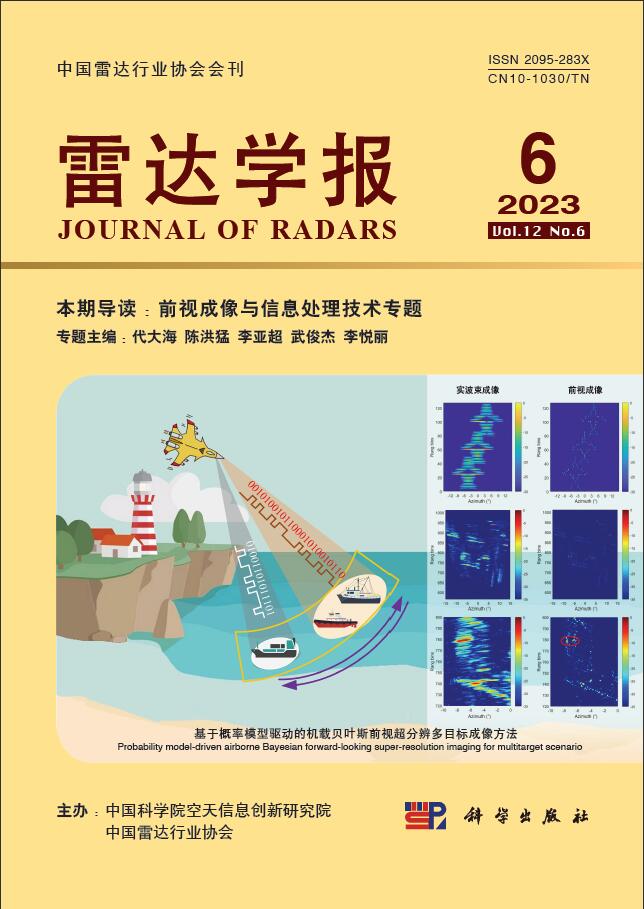

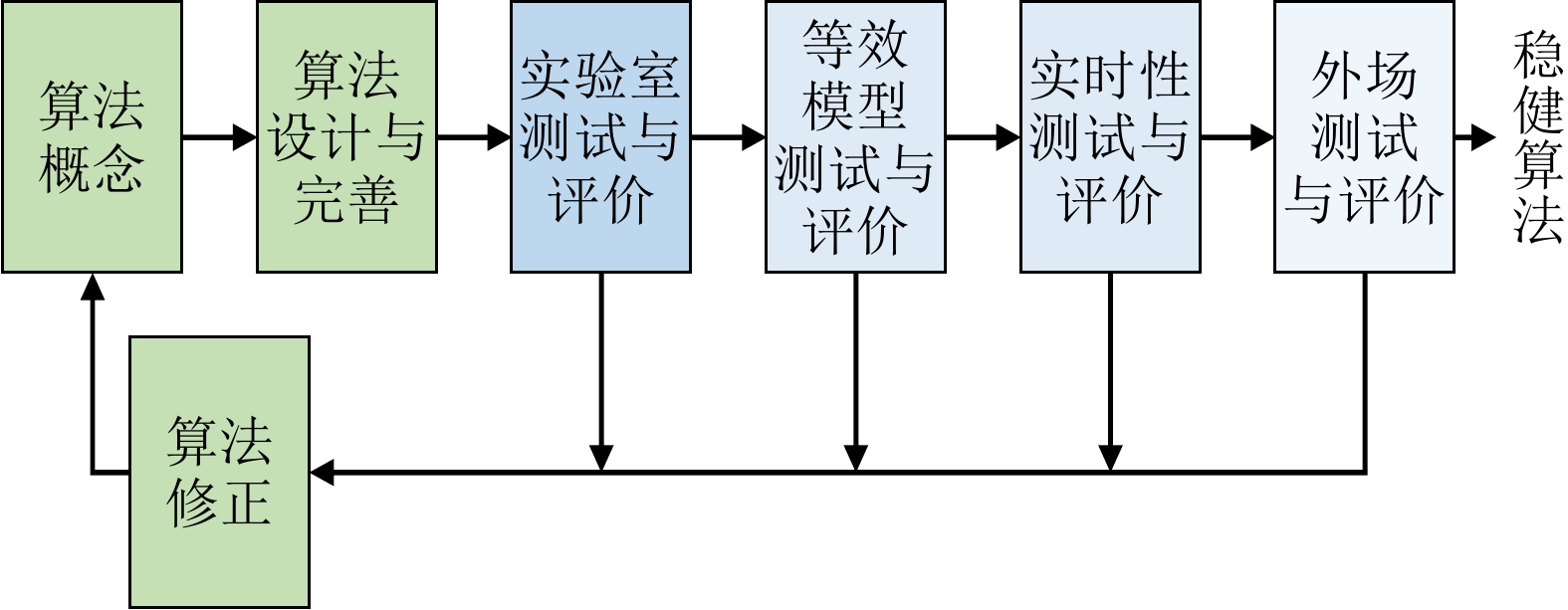



 DownLoad:
DownLoad:
